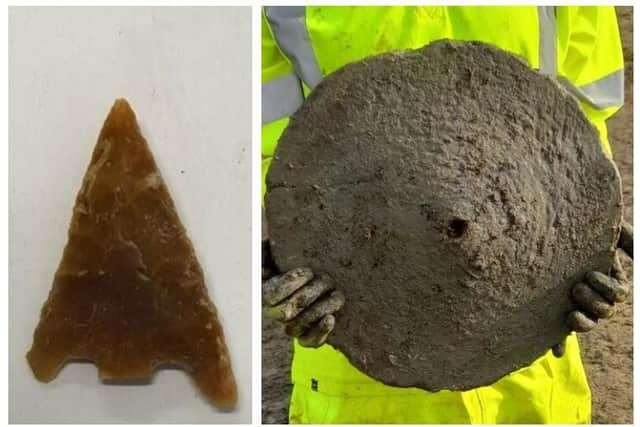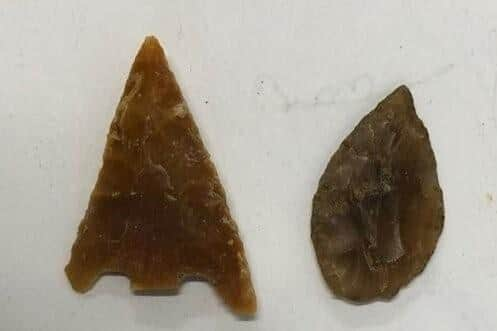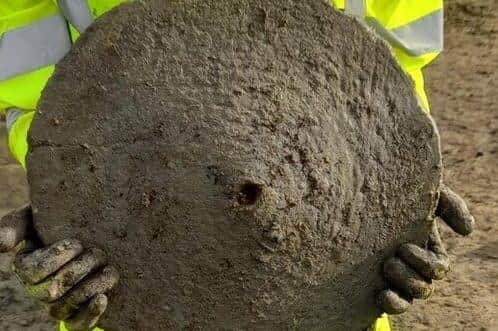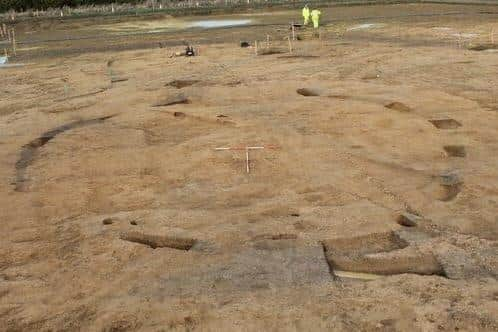Ancient artefacts dating back to Iron Age unearthed near Tempsford as work takes place on Black Cat improvements
This article contains affiliate links. We may earn a small commission on items purchased through this article, but that does not affect our editorial judgement.
and live on Freeview channel 276
Ancient artefacts have been unearthed near Tempsford which open a window into the life of our ancestors.
Historical buildings and relics dating back to the Middle Iron Age through to the Roman period have been discovered by archaeologists working on National Highways A428 Black Cat to Caxton Gibbet improvement scheme in Bedfordshire.
Advertisement
Advertisement
Since July 2021, archaeologists from the Museum of London Archaeology (MOLA) and the Cambridge Archaeology Unit, on behalf of National Highways, have been busy excavating as part of a wider programme on the proposed improvement project.


A National Highways spokesman said: "At a site known as Field 44 near the village of Tempsford, Central Bedfordshire, the team have uncovered evidence of an ancient farm, which has offered an incredible glimpse through time to see how life has changed over the last 6,000 years.
"Flint arrowheads were discovered dating back to the Neolithic [c. 4000-2200 BC] and Bronze Age [c. 2600-700 BC] periods, suggesting people were hunting animals in the surrounding landscape well before the farmstead existed.
"The first evidence of a settlement is from the Middle Iron Age [c. 300-100 BC], with the unearthing of two large round houses dating back to that period.
Advertisement
Advertisement
"They measure more than 15 metres in diameter and contain evidence of the remains of butchered animals, pottery, loom weights and personal items. This demonstrates that people both lived and worked in them."


There is also evidence the settlement expanded and continued to be occupied for around 400 years after the Roman conquest in AD 43.
During this time, farming was an important activity at the settlement, which has been proved by the discovery of an oven used to dry grains and make malt for brewing, as well as by further grains and cereals found elsewhere on site.
The settlement was a place where goods were being produced and traded, too.
Advertisement
Advertisement
Archaeologists identified a Roman pottery kiln with vast numbers of failed pots, termed ‘wasters’. It is thought that livestock, craft items and agricultural surpluses will have been traded and transported off site to larger distribution centres in the area.


Dr Steve Sherlock, archaeology lead for the A428 Black Cat to Caxton Gibbet improvement scheme, said: “The farmstead and artefacts we have unearthed near Tempsford is hugely exciting and significant find as it helps to further shape our understanding of what life in Bedfordshire was like over a period of 6000 years, and we can see how the site developed through different periods of time.
“What is particularly exciting is that the site was initially established beside a substantial boundary ditch, and we think this boundary was used to define perhaps a tribal area. This large ditch seems to have been maintained and occasionally redefined, whilst Iron Age settlements here and elsewhere respect the feature.
"The excavation in Field 44 will therefore inform how we examine other sites in Bedfordshire and Cambridgeshire as we continue with the programme of excavations.”
Advertisement
Advertisement
As excavations on the project continue, specialists will begin to analyse the artefacts in more detail, which will reveal more about the site and who lived there.


National Highways proposals for the A428 Black Cat to Caxton Gibbet improvement scheme will see the only remaining section of single carriageway between Milton Keynes and Cambridge replaced by a 10-mile dual carriageway helping to tackle one of the region’s most notorious congestion hotspots.
It is hoped that this will improve safety, help grow the local and regional economies, and discourage rat running through local villages.
The project includes a number of junction improvements, including a three-tier junction at Black Cat roundabout allowing free flowing traffic onto the A1 and the new dual carriageway.
Advertisement
Advertisement
It will also "create better routes for walkers, cyclists and horse riders and improve connections to St Neots and its train station".
Around 24,000 vehicles travel on the A428 between Cambridge Road and Caxton Gibbet every day. With considerable local housing and job growth expected, this number is likely to increase to around 33,000 vehicles by 2040.
For the latest information about the A428 Black Cat to Caxton Gibbet improvement scheme, visit the website or facebook page or follow the scheme on Twitter: @A428Cat